Read the Following Selection
Read the following selection, or click on the play button below to listen aloud.
Old Money, New Money
It is hard to imagine there was once a time when money did not exist. But thousands of years ago, people traded, or bartered, with each other to get what they needed. For instance, if someone needed a cow, she might trade a few chickens for it.
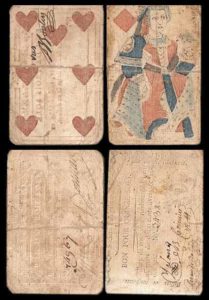
Playing card money
But trading takes time, and it is difficult to move cows and chickens around for bartering. So people began using coins and pieces of paper to represent animals, food, and other items.
Salt, Feathers, and Whales’ Teeth
Metal coins have been used in various countries for money for about 3,000 years. People started using paper money about 1,000 years ago because it was lighter to carry than coins.
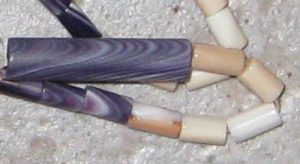
Wampum beads
Blankets, feathers, tea leaves, and even whales’ teeth have also been used for money. Long ago in ancient Rome, workers were paid not with coins but with salt. That is where the word salary comes from—sal means salt in Latin, the Romans’ language. In Canada in the late 1600s, there was a shortage of coins, so playing cards were used instead. The amount of money was written on the back of the card.
Some First Nations in North America used shell beads known as wampum for trade, in ceremonies for decoration, and to record agreements. It is hard to believe, but huge stone doughnuts were used as money by the people of Yap, which is an island in the Pacific Ocean. Some of the stones were so large they would not even fit in your bedroom!
Coins and Bills
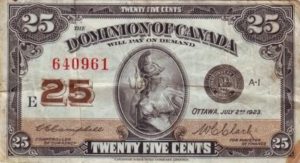
25¢ Canadian bill, 1923
People used to use 25¢ bills in Canada and the United States. These and other bills that were worth less than $1 were known across North America as shinplasters because they looked similar to a small, square piece of paper that was used at the time as a bandage.
Coins last longer than bills because metal is strong and durable. Money that lasts longer is less expensive to produce since it does not have to be replaced as frequently. That is good for the environment too. So many countries have switched from bills to coins for some of their money. Did you know that Canada used to have $1 and $2
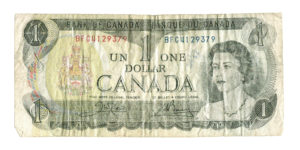
Canadian $1 bill
bills? The government has even talked about changing the $5 bill to a coin!
Modern Money
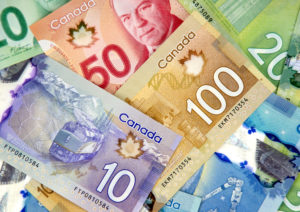
Canadian bills today
Paper money may last as little as two years. That is why countries such as Canada and others are now printing polymer bills—sometimes called “plastic money.” These bills are stronger than paper and cleaner too since they do not absorb liquid.
Countries are always looking for ways to make their bills difficult to counterfeit, or copy. Some bills have transparent sections, raised type, metallic images, holograms, and more. Other bills include Braille dots so visually impaired people can use them more easily.
Now, show what you know!
Complete some questions about the reading selection by clicking “Begin Questions” below.









